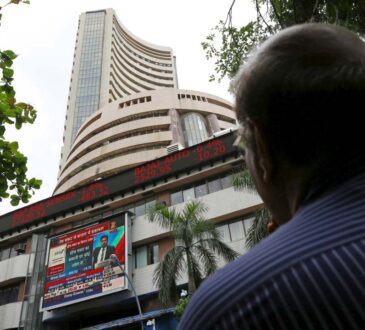

Michael M. Santiago
U.S. stocks on Thursday ended mixed, as an afternoon bout of selling ate into strong gains earlier.
A post-earnings drop in chip giant Nvidia (NVDA) intensified through the session and offset a boost to sentiment from data that showed a more robust expansion in the economy in the second quarter than previously estimated.
The tech-heavy Nasdaq Composite (COMP:IND) closed -0.23% at 17,516.43 points, giving up an advance of as much as 1.2%. The benchmark S&P 500 (SP500) settled little changed at 5,591.96 points, while the blue-chip Dow (DJI) finished +0.59% at a new record close of 41,335.05 points.
The attention was squarely focused on Nvidia (NVDA) on Wednesday. Its highly anticipated results showed fiscal second quarter revenue more than doubling Y/Y, amid continued demand from data centers for artificial intelligence (AI) chips. Analysts also heaped praise on the performance and said it was evidence that the AI craze was very much real.
However, for market participants now used to blowout results and guidance, Nvidia’s (NVDA) latest outlook failed to meet up to the loftiest of expectations.
Moreover, the company confirmed some production delays to its much-awaited Blackwell line of graphics processing units, though top boss Jensen Huang said samples were currently shipping to partners and production was expected to start in its fiscal fourth quarter. This combination drove Nvidia’s (NVDA) shares down and wiped off some $197B from the firm’s market cap.
“For all the talk about the ‘post-earnings volatility’ in Nvidia today, more than half of the stock’s daily moves this month have been larger than +/-3.4%,” Bespoke Investment Group noted on X (formerly Twitter).
The spotlight on Thursday returned to economic growth, a topic that has been top of investors’ minds since the U.S. nonfarm payrolls report earlier this month sparked recession concerns and led to a 3% rout in the S&P 500 (SP500).
The U.S. Bureau of Economic Analysis earlier in the morning said real gross domestic product (GDP) increased at an annual rate of 3% in Q2, higher than the first estimate of +2.8%. Moreover, the core personal consumption expenditures (PCE) price index – widely seen as the Federal Reserve’s preferred inflation gauge – was revised downward to +2.8%.
The second estimates for Q2 GDP and core PCE comes just a day ahead of July’s reading on the Fed’s favorite inflation gauge.
“Today was another great example of the ongoing rotation from growth to value stocks. Nvidia’s (NVDA) post-earnings stock price weakness, for example, showed how elevated expectations are, as the company sold off despite beating earnings and reporting strong guidance. Moreover, stronger-than-expected GDP numbers and solid jobless claims indicate that the market may have gone too far expecting a 50-basis points rate cut in September,” Leo Nelissen, part of investing group iREIT+HOYA Capital, told Seeking Alpha.
“Hence, I believe the rotation to value stocks is built on very fertile ground. I also believe that broadening market strength is a good thing for the S&P 500 (SP500) in the long term, as a high concentration in a few tech stocks could be a disadvantage,” Nelissen added.
Turning to the fixed-income markets, U.S. Treasury yields were higher on Thursday.
See how Treasury yields have done across the curve on the Seeking Alpha bond page.
Looking at active stocks, Best Buy (BBY) ended as the top percentage gainer on the S&P 500 (SP500), after the consumer electronics retailer lifted its annual profit guidance.
Conversely, Dollar General (DG) ended as the top S&P percentage loser, after the discount retailer slashed its full-year same-store sales growth guidance.
More on the markets
- Biggest stock movers today: NVDA, BBY, CRM, AFRM, and more
- 4 stocks to watch on Thursday: DG, DELL and more
- Volume Leaders: DG, CRM, OKTA, HPQ, and more
- There is a rough patch coming in the middle of September through month-end
- Nvidia stock loses ground, but dip buyers steer price away from post-earnings lows


